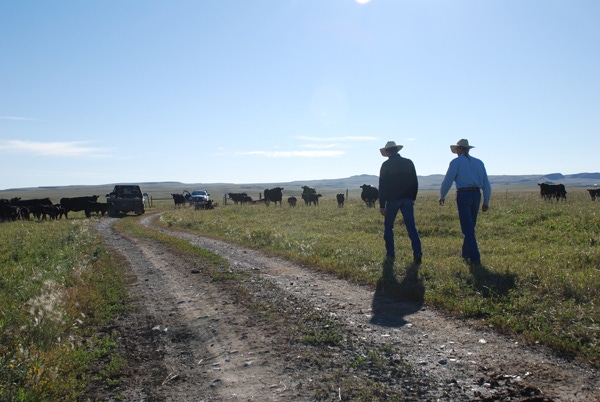I picked up the official publication of NCBA the other night. Reading the publication is always a good reminder of just how much pressure and how relentless the challenges are in the political realm. It never ceases to amaze me how many different issues our business has to deal with.
December 1, 2016

I picked up the official publication of NCBA the other night. Reading the publication is always a good reminder of just how much pressure and how relentless the challenges are in the political realm. It never ceases to amaze me how many different issues our business has to deal with.
I didn’t even get beyond the first page. The first article detailed how USDA is moving forward with its flawed GIPSA rules even though the industry raised serious questions and bipartisan opposition in Congress defunded it since USDA’s initial push. As NCBA President Tracy Brunner said, it’s just another example of a government solution looking for a problem.
With the recent market collapse, it is difficult to imagine that value-based marketing and the branding revolution that followed is potentially in peril. While there are multiple issues with the proposed GIPSA rules, the biggest focus is on competitive injury and undue preference. Given the wording, most producers at first glance would be inclined to think those are good ideas. But when it comes to government solutions, there is always the law of unintended consequences. I’m not even sure they are unintended consequences; they just prefer that we focus on the noble intention part rather than the harsh realities.
The next article in NCBA’s newspaper detailed the mismanagement of the wild horse and burro program in the Western states. Books can be written about noble aspirations and colossal failures of implementation. It is mind-boggling but the population of feral horses and burros has not only grown exponentially, it continues to grow at a rate of 20% per year.
Yet, here is the most amazing part—45,000 horses and burros are in what they call long term holding facilities. And that isn’t the most amazing part. It becomes unfathomable when you find out that it costs taxpayers $50,000 per animal per year. It would be criminal, but since it is the government, it is simply the ineptitude that we have come to expect.
The last front-page article was on sage grouse management plans. Amazingly, the science shows that the restrictive management plans have no correlation to nesting success. Once again, the government-provided solution was rolled out without a real understanding of the problem.
The result of the recent election surprised the experts. The real surprise is that it took this long to say enough is enough. While much remains to be seen on how the Trump administration will deal with government over-regulation, there are early signs. For example, the GIPSA rules don’t rise to the level of concern that they once did because the new administration has promised to end the rules by fiat, so the new rules probably will be dead before they are ever implemented.
Regulation is not inherently a bad thing, it only becomes such when we lose track of its purpose, which is to allow capitalism, democracy and striving for greatness possible. It is fine line; one that government inherently wants to cross. As always, it is up to the citizens to stop the destructive influence of over-regulation and government solutions to problems better left to industry and individuals to solve.
The opinions of Troy Marshall are not necessarily those of beefmagazine.com and the Penton Agriculture Group.
About the Author(s)
You May Also Like



